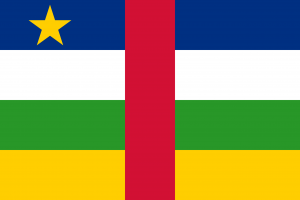Language/Sango/Grammar/Negation
Hi Sango learners! 😊
In this lesson, we will learn the important topic of negation in Sango grammar. Knowing how to say "not" and negate a sentence is crucial for basic communication in any language. We will cover how to form negation in Sango, and we will also provide some cultural context and interesting facts about Sango language and culture.
Consider exploring these related pages after completing this lesson: Pronouns, Future Tense & How to Use Be.
Negation in Sango[edit | edit source]
Negating in Sango is done by adding the word "ti" (which means "nothing") before the verb. For example, to negate the sentence "I eat rice," you would say "Ti na yé sângö." The word "ti" and the verb are always joined together.
If the verb starts with a vowel, you add "na" instead of "ti." For example, to negate the sentence "I have a book," you would say "Na ti wéti mïre."
To negate a sentence with a negative adverb like "never" or "nothing," you put the negative adverb before the verb and "ti" or "na." For example, to say "I never eat rice," you say "Te ti na yé sângö."
Examples[edit | edit source]
Here are some examples of negation in Sango:
| Sango | Pronunciation | English |
|---|---|---|
| Ti tângbi nâ yé. | tee tahng-be na yeh | Nothing is eaten here. |
| Na ti yé rîwâ. | nah tee yeh ree-wah | I don't have money. |
| Te ti na yé mâba. | teh tee na yeh mah-bah | He never eats meat. |
Cultural and Historical Context[edit | edit source]
Sango is a creole language that originated from the Lingala language spoken in the Congo. It was created by the French colonialists in the late 19th century as an auxiliary language for communication with the local population. Therefore, Sango played a crucial role in the spread of education, religion, and national identity in the Central African Republic, where it is now the national language alongside French.
Sango is known for its expressive and rhythmic musicality, especially in its songs and poetry. Its influence can be heard in popular music genres like zouk, soukous, and rumba in Africa and the Caribbean. Sango is also an important cultural marker of identity, independence, and unity for the people of the Central African Republic, who hold their language and culture dear in the face of economic and political challenges.
Dialogue[edit | edit source]
Here's a conversation between two Sango speakers demonstrating negation in context:
- Person 1: Nâ ti feïlé, nyéti? (Did you not fail the exam?)
- Person 2: Te na ti feïlé. (I never fail.)
- Person 1: Ti na rîwâ nängö! (I don't have money!)
- Person 2: Tä na ti wéti yabo. (I don't have your book.)
Practice Exercise[edit | edit source]
Let's practice negating a few sentences in Sango!
Translate the following sentences into Sango using negation: 1. I speak French. (Na kë rënde fransë) 2. We like to dance. (Nyâra nândaïka) 3. They go to school. (Ndingâ zëndëngö)
Now translate the following sentences into English: 1. Ti na tô mbôle. 2. Na ti wéti nyéti. 3. Te na ti zô bäa.
Conclusion[edit | edit source]
Negation is a fundamental part of any language, including Sango. We hope this lesson was helpful in improving your understanding of Sango grammar. As always, remember that practice makes perfect, so feel free to keep practicing and making mistakes!
➡ If you have any questions, please ask them in the comments section below.
➡ Feel free to edit this wiki page if you think it can be improved. 😎
Sources[edit | edit source]
Impressive work on finishing this lesson! Explore these additional pages to enhance your understanding: Adjectives & Conditional Mood.
Other Lessons[edit | edit source]
- How to Use Be
- Pronouns
- Plurals
- Future Tense
- Adjectives
- Questions
- How to Use Have
- Conditional Mood
- Give your Opinion

